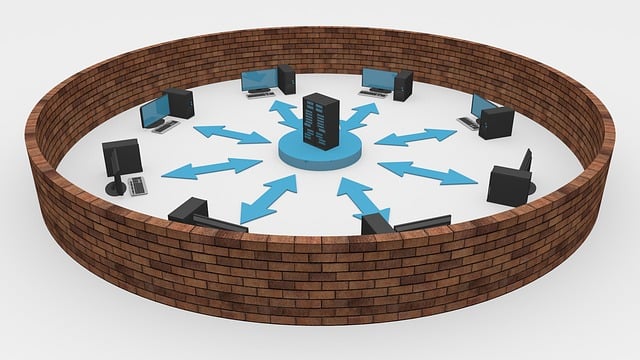Ever wondered how to use a battery-powered router safely? We’ve got you covered! In today’s world, staying connected is more important than ever, and having a battery-powered router can be a game-changer. But it’s essential to use it safely, considering the potential risks involved. In this article, we’ll dive into the details of how to ensure your safety while using a battery-powered router.
When it comes to using a battery-powered router safely, there are a few key things to keep in mind. Firstly, always ensure that you are using the router in a well-ventilated area. This is important because battery-powered routers can generate heat, and proper ventilation helps dissipate it. Additionally, make sure to read and follow the manufacturer’s instructions carefully to understand any specific safety precautions they recommend.
Another crucial aspect is to protect your personal information. When using a battery-powered router, it is essential to secure your network by setting up a strong password and enabling encryption. This will prevent unauthorized access and protect your sensitive data. We’ll discuss more about this in detail in the upcoming article.
Lastly, it is crucial to maintain your battery-powered router properly to ensure its longevity and safety. Regularly clean the device to prevent dust and debris accumulation, and avoid exposing it to extreme temperatures or moisture. Taking these simple precautions will go a long way in preventing accidents and ensuring the safe and optimal use of your battery-powered router.
In the upcoming article, we will delve deeper into each of these topics, providing you with step-by-step instructions and helpful tips to use a battery-powered router safely. Stay tuned and let’s explore the exciting world of wireless connectivity while keeping our safety a priority!

Understanding Battery-Powered Routers
A battery-powered router is a woodworking tool that operates on a rechargeable battery instead of being directly connected to a power outlet. This portable and convenient tool allows woodworkers to work on projects without the constraints of power cords and electrical outlets.
What is a battery-powered router?
A battery-powered router is a handheld power tool used in woodworking to hollow out or shape wood materials. It operates by spinning a cutting bit or blade at high speeds to remove material from the workpiece. Unlike traditional routers that require a direct power source, battery-powered routers are powered by lithium-ion batteries, which provide the necessary energy for operation.
How does a battery-powered router work?
A battery-powered router works by converting electrical energy from the rechargeable battery into mechanical energy. When the power switch is turned on, the energy stored in the battery is transferred to the motor of the router. The motor then spins the cutting bit or blade, allowing it to remove material from the wood. The router is controlled by the user, who guides it along the desired path to create the desired shape or cut.
Safety Precautions for Battery-Powered Routers
While battery-powered routers offer convenience and flexibility, it’s essential to prioritize safety when using these tools. Here are some safety precautions to keep in mind:
Know the limitations of the router’s battery life
Before starting any woodworking project with a battery-powered router, it’s crucial to know the limitations of the router’s battery life. Familiarize yourself with the manufacturer’s specifications regarding battery life and charging time. This will help you plan your work accordingly and prevent unexpected interruptions due to a drained battery.
Ensure proper charging of the router’s battery
To ensure the router’s battery is always ready for use, it’s important to follow proper charging procedures. Use the charger provided by the manufacturer, as using incompatible chargers or chargers not specifically designed for the router can damage the battery or pose a safety risk. Avoid overcharging the battery, as this can reduce its lifespan. Charge the battery in a well-ventilated area away from flammable materials.
Use the router in a well-ventilated area
When using a battery-powered router, it’s essential to work in a well-ventilated area to prevent the accumulation of dust and fumes. Woodworking generates fine dust particles and potentially harmful fumes from the cutting process. Good ventilation helps to minimize exposure to these particles and fumes, reducing the risk of respiratory issues.
Avoid exposure to extreme temperatures
Battery performance can be affected by extreme temperatures. Avoid exposing the router and its battery to excessively hot or cold environments, as this can cause the battery to lose capacity or even fail. Store the router and its battery in a cool and dry place when not in use, but avoid storing it in unheated or non-insulated areas during the winter months.
Keep the router away from water and moisture
Water and moisture can damage both the router and its battery. Never operate the router in wet conditions or expose it to water. If the router is accidentally exposed to moisture, immediately remove the battery and allow the tool to dry thoroughly before use. Moisture can cause corrosion and electrical damage, compromising the tool’s performance and safety.
Handle the router with care to prevent damage
Battery-powered routers are precision tools that require careful handling to ensure their longevity and performance. Avoid dropping the router or subjecting it to rough handling, as this can damage internal components and affect its functionality. Use both hands to securely grip the router during operation, and always follow proper technique and safety guidelines.
Avoid using the router near flammable materials
Woodworking often involves the use of flammable materials such as sawdust, solvents, and finishes. When using a battery-powered router, it’s crucial to maintain a safe distance from these materials to prevent accidental ignition or fires. Always keep a fire extinguisher nearby and have a clear understanding of fire safety procedures in your workspace.
Follow the manufacturer’s guidelines for safe usage
Every battery-powered router comes with a manufacturer’s instruction manual that includes guidelines for safe usage. Familiarize yourself with the manual and follow the instructions carefully. The manual will provide specific information regarding safety features, recommended operating procedures, and any potential hazards associated with the router.
Protecting Yourself while Using a Battery-Powered Router
When using a battery-powered router, it’s important to prioritize your safety. Here are some precautions to consider:
Wear appropriate protective gear
Wearing appropriate protective gear is crucial when using a battery-powered router. Always wear safety glasses to protect your eyes from flying debris. Additionally, consider wearing a face shield to protect your face from debris and a dust mask to prevent inhalation of fine dust particles. Gloves can also provide added protection and improve your grip on the router.
Maintain a safe distance from the router
When using a battery-powered router, maintain a safe distance between yourself and the tool to prevent accidental contact with the spinning bit or blade. This will help prevent injuries and accidental cuts. It’s also important to ensure that bystanders, especially children and pets, are kept at a safe distance from the work area.
Avoid touching the router while it’s in operation
Never touch the router while it’s in operation. The spinning bit or blade can cause serious injuries if in contact with your skin. It’s important to let the router come to a complete stop before making any adjustments, changing bits or blades, or moving the workpiece.
Be cautious of flying debris
The cutting process of a battery-powered router produces flying debris. These particles can pose a risk of eye injury. Always be aware of the direction in which the debris is being ejected and position yourself accordingly. It’s best to position yourself to the side of the router, using a shield to deflect debris away from your body.
Protect your eyes and face
As mentioned earlier, wearing safety glasses is essential for eye protection. The high-speed rotation of the router’s bit or blade can cause splinters and small wood pieces to project towards the operator. By wearing safety glasses and a face shield, you provide extra protection to your eyes and face.
Avoid wearing loose clothing or jewelry
When operating a battery-powered router, avoid wearing loose clothing or jewelry that could get caught in the spinning bit or blade. Loose clothing or jewelry can be pulled into the router, causing serious injuries. Wear close-fitting clothing and remove any jewelry that may pose a hazard.
Setting Up and Using a Battery-Powered Router
Now that we’ve covered the safety precautions, let’s move on to setting up and using a battery-powered router properly. Following these steps will help you achieve accurate and efficient results while minimizing the risk of accidents.
Select a suitable work area
Start by selecting a suitable work area for your woodworking project. Choose a well-lit and spacious area where you can comfortably maneuver the router. Ensure that the work surface is stable and secure to prevent any movement or vibrations while operating the tool.
Ensure the router is securely placed
Before starting the router, make sure it is securely placed on the work surface. If the router is not properly secured, it may move or tip over during operation, causing damage to the workpiece or potential injury. Use clamps or other appropriate methods to secure the router in place.
Follow the router’s instruction manual for setup
Every battery-powered router has specific setup requirements. Refer to the instruction manual provided by the manufacturer for detailed instructions on setting up the router. This may include installing or adjusting the cutting bit or blade, adjusting the depth of cut, and ensuring all components are securely attached.
Check the router’s bit and blade for proper installation
Before using the battery-powered router, double-check that the cutting bit or blade is properly installed. Ensure that it is tightly secured and aligned correctly. A loose or improperly installed bit or blade can lead to poor cutting results or even cause the bit or blade to detach during operation, posing a significant safety risk.
Securely hold the router with both hands
When using a battery-powered router, always hold it with both hands for maximum control and stability. Grip the router’s handles firmly, with one hand on the main handle and the other hand on the auxiliary handle. This grip will allow you to guide the router with precision and minimize the risk of accidents.
Start the router gradually and maintain control
When starting the router, avoid full-speed operation from the beginning. Gradually increase the speed to the desired level. This allows you to maintain control and prevents the router from jumping or jerking when it comes into contact with the workpiece. Maintain a steady and controlled motion as you guide the router along your desired path.
Use the appropriate speed and cutting technique
Different woodworking projects require different cutting speeds and techniques. Consult the router’s instruction manual for recommendations on the appropriate speed and cutting technique for your specific application. Using the wrong speed or technique can result in poor cutting quality or even damage the router and workpiece.
Avoid forcing the router into the material
Let the router’s cutting bit or blade do the work. Avoid applying excessive force or pushing the router into the material. Forcing the router can result in a poor quality cut, increased risk of kickback, and potential damage to the router and workpiece. Instead, guide the router with a steady and controlled motion, allowing the cutting bit or blade to remove the material smoothly.
Take breaks to prevent overheating
Continuous use of a battery-powered router can cause overheating. To prevent overheating, take regular breaks during your woodworking project, allowing the router to cool down. This will help maintain the router’s performance and prevent damage to internal components. Refer to the router’s instruction manual for recommended operating times and break intervals.
Clean the router and its accessories after use
After using a battery-powered router, it’s important to clean it thoroughly to remove any dust, debris, or residue that may have accumulated. Use compressed air or a small brush to clean the router’s housing, motor, and other exposed components. Ensure that the router is powered off and unplugged before cleaning. Clean the router’s accessories, such as the cutting bit or blade, following the manufacturer’s instructions.

Maintenance and Storage of Battery-Powered Routers
Proper maintenance and storage of your battery-powered router are crucial for its longevity and performance. Here are some maintenance tips to keep in mind:
Regularly inspect the router for any damage
Before and after each use, inspect the router for any signs of damage or wear. Check for cracks in the housing, loose screws, damaged cords, or any other issues that may affect the router’s functionality or safety. If any damage is found, discontinue use and seek repairs or replacement.
Clean the router and remove any debris
As mentioned earlier, regularly clean the router to remove dust, debris, and residue. This helps maintain the tool’s performance and prevents clogging or damage to internal components. Pay special attention to the router’s air vents, as they can become clogged with dust and affect cooling.
Keep the battery-powered router in a dry and secure place
When not in use, store the battery-powered router in a dry and secure place. Moisture can damage the router and its battery, so it’s important to protect it from environmental elements. Consider using a designated storage case or bag to protect the router from dust, debris, and accidental damage.
Store the router in its designated case or bag
Many battery-powered routers come with a designated storage case or bag. This case or bag is specifically designed to protect the router during storage and transportation. When not in use, always store the router in its designated case or bag for added protection.
Do not expose the router to direct sunlight
Direct sunlight can cause the router’s housing and components to warp or deteriorate over time. Avoid exposing the router and its battery to prolonged periods of direct sunlight. Ultraviolet rays from the sun can degrade the battery’s performance and shorten its lifespan.
Check and charge the battery periodically
Periodically check the battery’s charge level, even when not in use. Lithium-ion batteries have a natural discharge rate, so it’s important to ensure they are adequately charged. Follow the manufacturer’s recommendations for optimal charging intervals. Avoid discharging the battery completely, as this can also reduce its lifespan.
Replace any worn out or damaged parts
If any parts of the battery-powered router, such as the cutting bit or blade, show signs of wear or damage, replace them promptly. Using worn out or damaged parts can compromise the quality of your cuts and pose a safety risk. Always use genuine replacement parts recommended by the manufacturer.
Troubleshooting Common Issues with Battery-Powered Routers
Despite proper usage and maintenance, battery-powered routers may encounter occasional issues. Here are some common issues and possible solutions:
Router not turning on or charging
If the router fails to turn on or charge, check the battery’s charge level and connection. Ensure that the battery is securely inserted into the router and that the charger is properly connected to both the battery and a power source. If the issue persists, consult the router’s instruction manual or contact the manufacturer for further troubleshooting.
Poor performance or speed issues
If the router is experiencing poor performance or speed issues, check the battery’s charge level. A low battery charge can result in reduced power output and performance. Allow the battery to charge fully before using the router. If the issue persists, consult the router’s instruction manual or contact the manufacturer for further assistance.
Excessive noise or vibrations
Excessive noise or vibrations during router operation may indicate a problem with the cutting bit or blade. Check that the bit or blade is properly installed and securely tightened. If the issue persists, inspect the bit or blade for damage or wear. Replace the bit or blade if necessary.
Spindle lock or depth adjustment problems
If you encounter issues with the spindle lock or depth adjustment mechanism, ensure that you are following the correct procedure as outlined in the router’s instruction manual. Apply firm pressure when engaging the spindle lock to prevent slippage. If the issue persists, consult the manual or contact the manufacturer for further guidance.
Overheating or quickly draining battery
If the router becomes excessively hot or the battery drains quickly during use, allow the router to cool down and check the battery’s charge level. Overheating and quick battery drainage may indicate a strain on the router or a battery issue. If the problem persists, consult the manual or contact the manufacturer for assistance.
Inaccurate cutting or routing
If the router is producing inaccurate cuts or routes, check the stability of the router and make sure it is properly secured. Also, inspect the cutting bit or blade for damage or wear. A dull or damaged bit or blade can result in poor cutting quality. Sharpen or replace the bit or blade as necessary.

Seeking Professional Help for Battery-Powered Router Repairs
Sometimes, despite our best efforts, battery-powered routers may require professional repairs. Here are some steps to take when seeking professional help:
Identifying when professional help is needed
If you encounter persistent issues with your battery-powered router that you are unable to resolve through troubleshooting, it may be time to seek professional assistance. Look for signs such as frequent malfunctions, unusual noises, or significant decreases in performance.
Researching and contacting reputable repair services
When seeking professional help, research and identify reputable repair services that specialize in power tools and specifically battery-powered routers. Check online reviews, customer testimonials, and ratings to ensure you choose a reliable and skilled repair service.
Evaluating the cost of repair versus replacement
Before committing to repairs, evaluate the cost of repair versus the cost of a new battery-powered router. Consider factors such as the age of the router, the extent of repairs needed, and the availability of replacement parts. In some cases, it may be more cost-effective to replace the router rather than repair it.
Following any warranty or guarantee terms
If your battery-powered router is still under warranty or guarantee, review the terms and conditions. Some repairs or replacement parts may be covered by the manufacturer’s warranty, reducing the cost or providing a free repair solution. Follow the instructions provided by the manufacturer to ensure warranty coverage.
Communicating the issue clearly to the repair technician
When bringing your battery-powered router to a repair service, communicate the issue clearly to the repair technician. Provide them with as much information as possible regarding the problem, any troubleshooting steps you have already taken, and any specific concerns you may have. This will help the technician diagnose and address the issue more effectively.
Caring for the Battery and Charger of a Battery-Powered Router
Proper maintenance of the battery and charger is crucial for the performance and lifespan of your battery-powered router. Here are some tips for caring for the battery and charger:
Properly storing and charging the battery
Store the battery in a cool and dry place when not in use. Avoid exposing it to extreme temperatures, humidity, or direct sunlight. Follow the manufacturer’s instructions for proper charging procedures. Charge the battery only with the charger provided by the manufacturer and avoid overcharging or undercharging the battery to maintain its lifespan.
Checking the battery’s charge level
Periodically check the battery’s charge level, even when not in use. Lithium-ion batteries have a natural discharge rate, so it’s important to ensure they are adequately charged. Most battery-powered routers have a charge indicator or a battery level indicator that can help you track the charge level.
Using the charger provided by the manufacturer
Use the charger specifically designed for your battery-powered router. Using incompatible chargers can damage the battery or pose a safety risk. The charger provided by the manufacturer is specifically designed to deliver the correct voltage and current for optimum charging performance.
Avoiding overcharging or undercharging the battery
Overcharging or undercharging the battery can affect its performance and lifespan. Follow the manufacturer’s instructions for proper charging times. Avoid leaving the battery on the charger for extended periods of time after it has reached a full charge, as this can lead to overcharging. If you’re not planning to use the router for an extended period, partially charge the battery to about 40-50% capacity before storing it.
Replacing the battery when necessary
Batteries have a limited lifespan and will eventually need to be replaced. Signs of a deteriorating battery include decreased runtime, reduced power output, and difficulty holding a charge. When you notice these signs, it’s time to replace the battery. Refer to the router’s instruction manual or contact the manufacturer for guidance on battery replacement.
Maintaining the charger’s cleanliness and functionality
Keep the charger clean and free from dust, debris, or any other foreign substances. Regularly inspect the charger’s cords, plugs, and connectors for any signs of damage or wear. If any issues are found, discontinue use and seek repair or replacement. When storing the charger, keep it in a clean and dry place away from excess heat or moisture.
Understanding the Benefits of Battery-Powered Routers
Now that we’ve covered safety precautions, usage, maintenance, troubleshooting, and battery and charger care, let’s explore the benefits of using a battery-powered router:
Portability and freedom of movement
One of the significant advantages of battery-powered routers is their portability. They are not limited by power cords or proximity to electrical outlets, allowing woodworkers to work in various locations, including outdoor or remote areas. Battery-powered routers provide the freedom to move around without cumbersome power cords.
Versatility in various woodworking applications
Battery-powered routers offer versatility and can be used in a wide range of woodworking applications. From edge profiling and dado cutting to intricate woodworking designs, these tools can handle many tasks. Their compact size allows for maneuverability in tight spaces and the ability to work on a variety of materials.
Ease of use and convenience
Battery-powered routers are generally user-friendly and easy to operate. They eliminate the need for complex wiring or setup, making them suitable for beginners and professionals alike. Their cordless design provides convenience and allows for quick setup and immediate use.
Environmentally friendly and reduced energy consumption
Compared to traditional corded routers, battery-powered routers are more environmentally friendly. They consume less energy and produce fewer carbon emissions. By using battery power, these routers contribute to reducing overall energy consumption and dependence on fossil fuels, making them a greener option for woodworking projects.
Ideal for outdoor or remote projects
The portability and convenience of battery-powered routers make them ideal for outdoor or remote woodworking projects. Whether you’re working on a deck, a cabin, or a construction site without readily available power, battery-powered routers can provide the necessary cutting and shaping capabilities without the need for electrical outlets.
Conclusion
By following safety precautions and guidelines, you can use a battery-powered router safely and efficiently in your woodworking projects. Battery-powered routers offer numerous benefits, including portability, versatility, ease of use, and environmental friendliness. Regular maintenance and proper storage will prolong the lifespan of the router and ensure optimal performance. Understanding the benefits of battery-powered routers allows you to make an informed choice when selecting the right tool for your woodworking needs. Stay safe, enjoy your woodworking projects, and let the battery-powered router enhance your woodworking experience.
